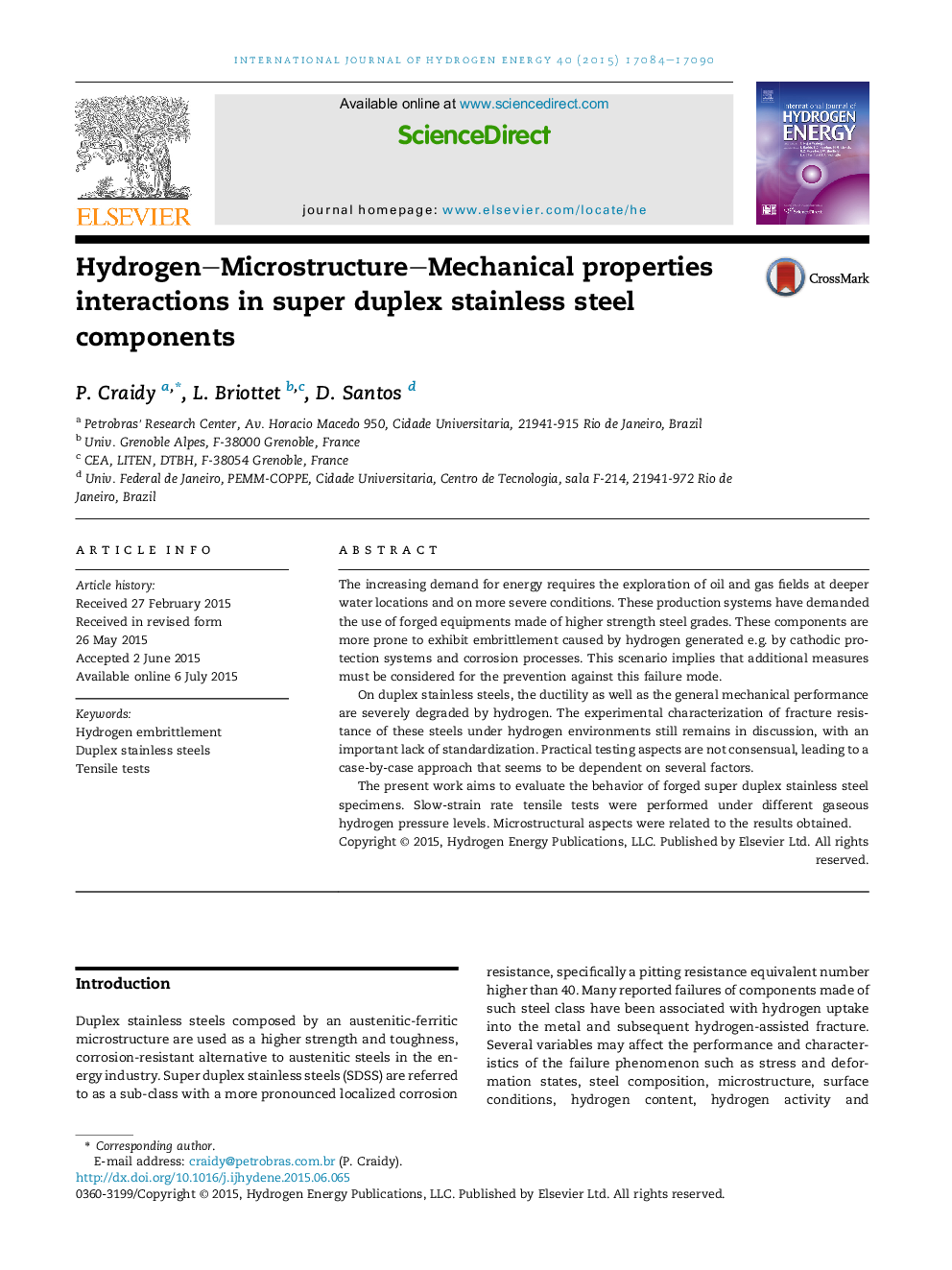| Article ID | Journal | Published Year | Pages | File Type |
|---|---|---|---|---|
| 1278407 | International Journal of Hydrogen Energy | 2015 | 7 Pages |
•Hydrogen embrittlement of super duplex stainless steels was evaluated.•Slow-strain rate tensile tests were performed with gaseous hydrogen up to 300 bar.•The tested material presents a coarser microstructure, more susceptible to HE.•Strain rates of 10−5 s−1 and H2 pressures above 50 bar induced considerable HE.•These results can be used to establish optimized test procedures.
The increasing demand for energy requires the exploration of oil and gas fields at deeper water locations and on more severe conditions. These production systems have demanded the use of forged equipments made of higher strength steel grades. These components are more prone to exhibit embrittlement caused by hydrogen generated e.g. by cathodic protection systems and corrosion processes. This scenario implies that additional measures must be considered for the prevention against this failure mode.On duplex stainless steels, the ductility as well as the general mechanical performance are severely degraded by hydrogen. The experimental characterization of fracture resistance of these steels under hydrogen environments still remains in discussion, with an important lack of standardization. Practical testing aspects are not consensual, leading to a case-by-case approach that seems to be dependent on several factors.The present work aims to evaluate the behavior of forged super duplex stainless steel specimens. Slow-strain rate tensile tests were performed under different gaseous hydrogen pressure levels. Microstructural aspects were related to the results obtained.
